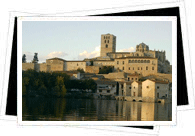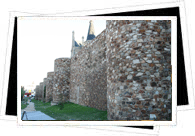 Vía de la Plata (Silver Route) History
Vía de la Plata (Silver Route) History At well over 2,000 years old, the Vía de la Plata, or "Silver Route," is quite literally an ancient road. When the rather ambitious Roman Empire extended its way into the Iberian Peninsula (now composed of Spain and Portugal), the first great civilizations and cities truly began to flourish. Perhaps the greatest of these early civilizations was Hispalis - now the modern city of Sevilla - which, towards the end of the Bronze Age, prospered as the capital of a wealthy metal mining zone.
As sticklers of organization and planning, the Romans put time and energy into creating a massive network of roads which essentially linked together its entire empire- no easy feat, as the Roman Empire spread out to encompass most of Europe! Construction on the Vía de la Plata began between 29 and 19 B.C. and quickly grew to become one of the most important Roman roads in Spain. Uniting the very south with the very north, the Vía de la Plata is a straight-shoot through mountains, valleys and plains that runs from Sevilla to Gijón.
Throughout its lengthy history, the Vía de la Plata has been a junction of civilizations credited with the spread of art, architecture, handicrafts, folk culture and much more. Emblematic Spanish cities like Astorga, León, Salamanca and Mérida were built along the Vía de la Plata, along with a myriad of fortresses, arches, bridges and aqueducts. While the passage of time inevitably yielded better roads, from the first through 19th centuries the Vía de la Plata served as the backbone on which new paths and roads were constructed and its importance is timeless.
 Vía de la Plata Route
Vía de la Plata Route If you're interested in travelling the Vía de la Plata, start out your trip in Sevilla- the ancient Roman city of Hispalis- and continue pretty much due north until you hit the city of Gijón, a city on Spain's northern coast that began long ago as a Roman military encampment. Below you will find the historic Vía de la Plata route, but if you're looking for more detailed information and routes, visit the following official website:
www.spain.info/TourSpain/Grandes+Rutas/